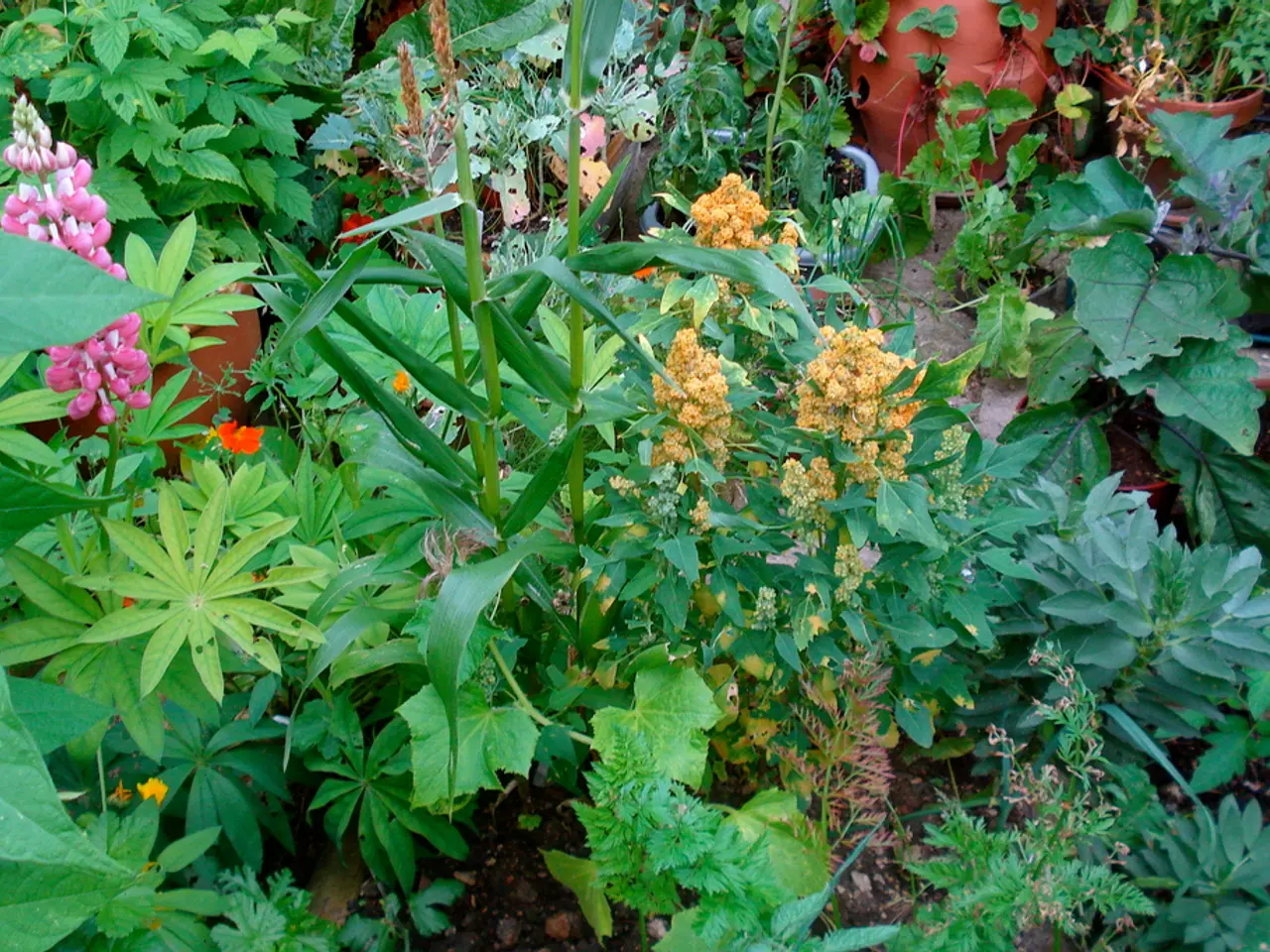Best Choices for an Eco-Conscious Home Vegetable Patch
In the pursuit of sustainability and self-sufficiency, creating an eco-friendly home garden has become increasingly popular. This guide offers a comprehensive approach to transforming your outdoor and indoor spaces into thriving, eco-friendly oases, using upcycled materials, vertical gardening, native plants, sustainable planting techniques, and indoor herb gardens.
Upcycling for Gardening ------------------------
Upcycling, the art of creating something valuable from discarded materials, is an excellent way to give new life to old items while adding character to your garden. For instance, old plastic bottles can be transformed into mini planters for herbs, while wooden pallets can be repurposed as planters for succulents or herbs.
### DIY Vertical Garden with Plastic Bottles
To create a space-saving vertical garden, cut the bottom off plastic bottles and use them as mini planters. Hang them from a wooden or metal frame to create a visually appealing and functional garden feature.
### Wooden Pallet Planter
Wooden pallets can be used to create planters for herbs or succulents, providing an eco-friendly alternative to purchasing new planters. This is a great way to reuse materials that would otherwise be discarded.
Vertical Gardening -------------------
Vertical gardening is an ideal solution for urban spaces or small yards, as it maximises space and can be aesthetically pleasing.
### Creating a Vertical Garden
1. Choose a Frame: Use a wooden or metal frame to support your plants. 2. Select Plants: Choose plants that grow well in vertical conditions, such as herbs or succulents. 3. Add Soil and Plants: Fill your planters with a well-draining potting mix and plant your chosen species. 4. Maintain: Ensure your plants receive enough sunlight and water.
Native Plants --------------
Native plants are essential for an eco-friendly garden because they require less maintenance and support local wildlife.
### Benefits of Native Plants
- **Less Water and Fertilizer**: Native plants are adapted to the local climate and soil, reducing the need for additional resources. - **Support Local Ecosystems**: They provide food and shelter for local wildlife, enhancing biodiversity. - **Tips for Choosing Native Plants**: Use the USDA Plant Hardiness Zone Map to select native plants suitable for your area.
Sustainable Planting Techniques --------------------------------
### Organic Mulch
Organic mulch, such as wood chips, shredded bark, straw, leaves, or grass clippings, can regulate soil temperature, retain moisture, and suppress weeds.
### Composting
Creating a compost pile using food scraps and yard waste can enrich your soil naturally, reducing the need for chemical fertilisers.
Indoor Herb Garden -------------------
Indoor herb gardens are perfect for year-round herbs and add a touch of green to your home.
### Setting Up an Indoor Herb Garden
1. Choose a Location: Select a spot with plenty of sunlight or use grow lights. 2. Select Containers: Use small pots or planters that fit your space. 3. Choose Herbs: Select easy-to-grow herbs like basil, mint, or parsley. 4. Maintain: Water and fertilize your herbs as needed.
By incorporating these practices, you can create a vibrant, eco-friendly home garden that is both sustainable and visually appealing. Embracing an eco-friendly approach to gardening not only benefits you but also contributes to a healthier planet.
In the pursuit of sustainability and self-sufficiency, upcycling old materials like plastic bottles and wooden pallets for creating mini planters or planters helps in giving new life to discarded items, adding character, and saving space in your garden. To create a space-saving vertical garden, cut the bottom off plastic bottles and hang them from a wooden or metal frame. Wooden pallets can be repurposed as planters for herbs or succulents, reducing the need to purchase new planters.
Vertical gardening is an ideal solution for small urban spaces, as it maximizes space and can be aesthetically pleasing. To create a vertical garden, choose a wooden or metal frame, select plants that grow well in vertical conditions, fill planters with a well-draining potting mix, plant chosen species, and maintain the plants by ensuring they receive sufficient sunlight and water.
Native plants are essential for an eco-friendly garden, as they require less maintenance and support local wildlife. Incorporating native plants into your garden can help reduce the need for additional resources and enhance biodiversity. To choose native plants, use the USDA Plant Hardiness Zone Map to select native plants suitable for your area.
Embrace sustainable planting techniques to create an eco-friendly home garden. Organic mulch made from wood chips, shredded bark, straw, leaves, or grass clippings can regulate soil temperature, retain moisture, and suppress weeds. Creating a compost pile using food scraps and yard waste can enrich your soil naturally, reducing the need for chemical fertilizers.
Indoor herb gardens are perfect for year-round herbs and adding a touch of green to your home. To set up an indoor herb garden, choose a location with plenty of sunlight or use grow lights, select containers that fit your space, choose easy-to-grow herbs like basil, mint, or parsley, and maintain the herbs by watering and fertilizing them as needed.
A vibrant, eco-friendly home garden can be both sustainable and visually appealing. By incorporating upcycling, vertical gardening, native plants, sustainable planting techniques, and indoor herb gardens into your home-and-garden lifestyle, you contribute to a healthier planet while enjoying the beauty of gardening and the freshness of vegetables and plants growing right in your garden. Embracing a focus on sustainable living, such as reducing waste through upcycling, conserving water, and promoting biodiversity, will not only benefit you but also have a positive impact on the environment and the world at large.




